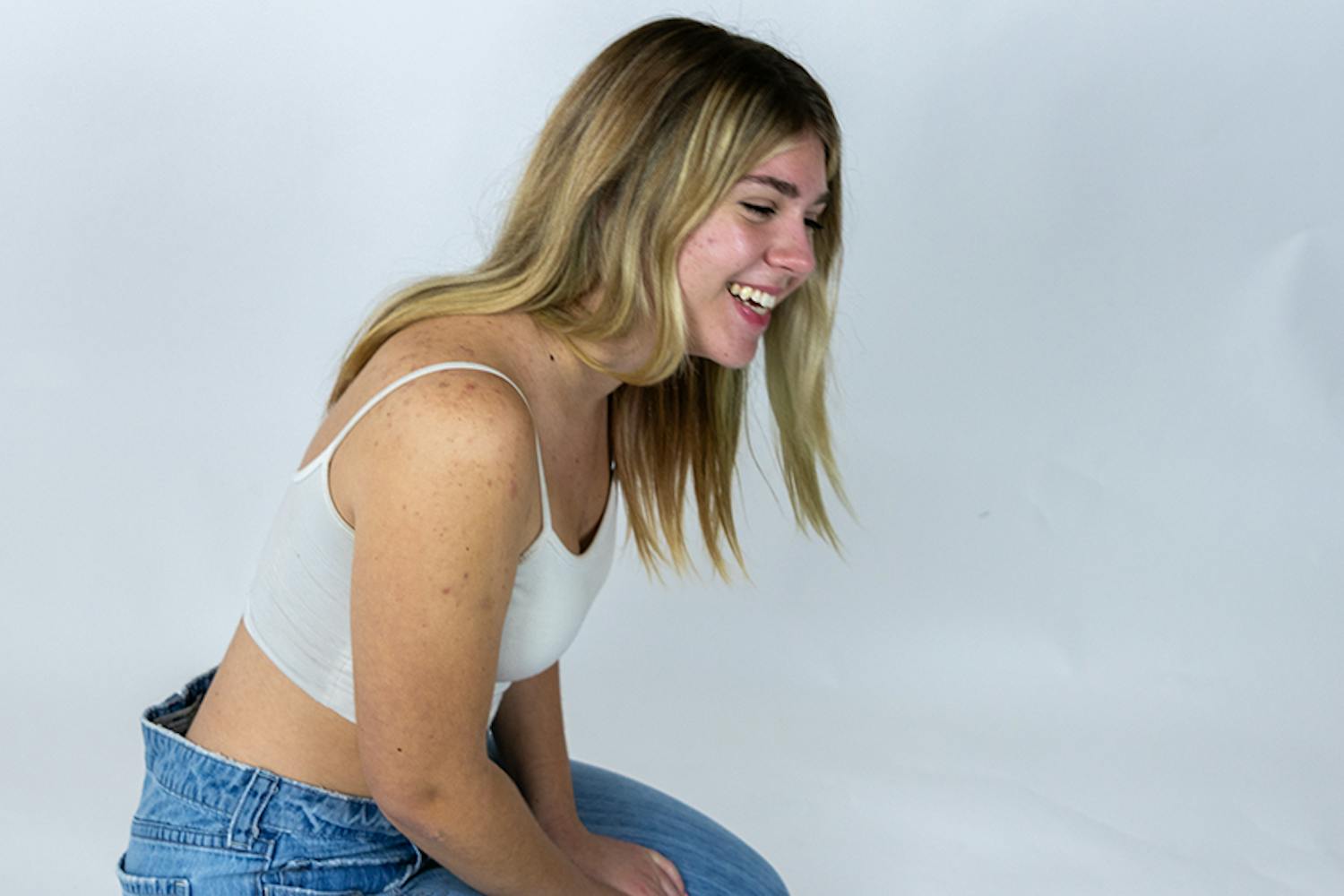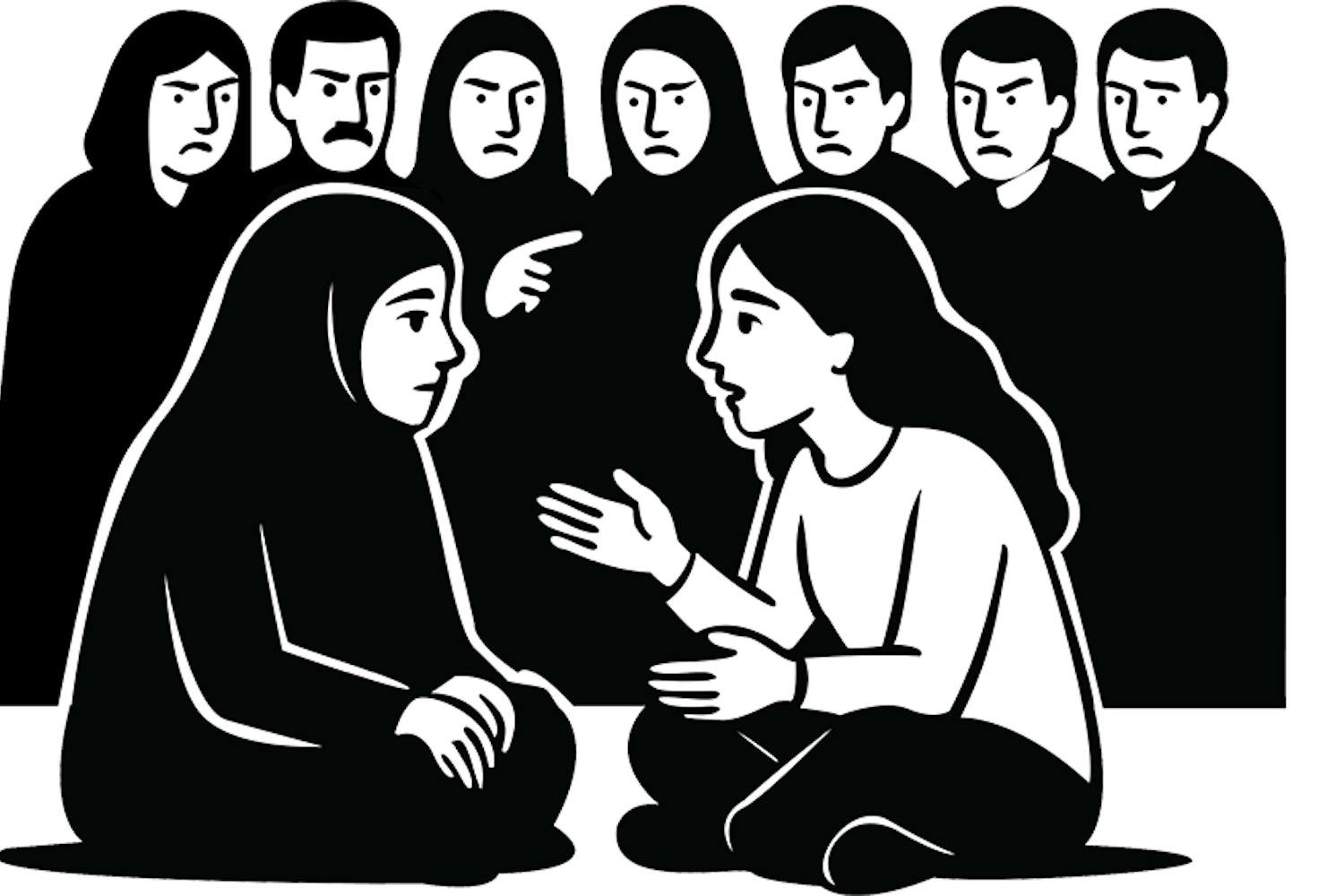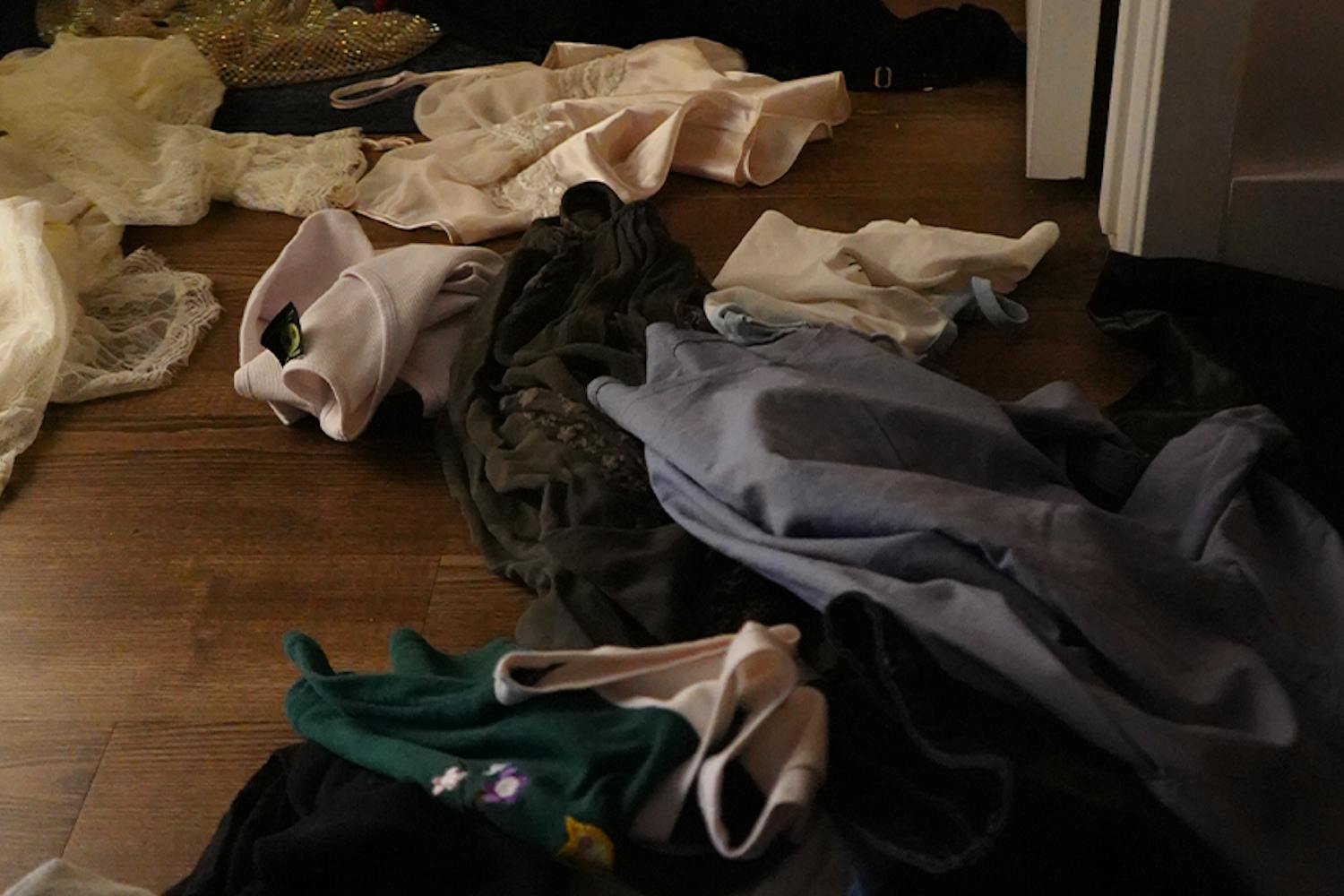::Find out about the conversion processes for other major religions by clicking here::
From the unforgettable baptism scene in My Big Fat Greek Wedding (John Corbett stands in a kid-sized inflatable swimming pool while being dunked into the water in the Greek Orthodox Church), to the comedic scene from Sex and the City when Charlotte York announces she is “becoming a Jew,” religious conversions are moving from behind devoutly closed doors to blaring TV and movie screens. Remember how freaky it was when Tom Cruise tried to spread his scientology craze all over Hollywood? There are satirical episodes of South Park and people jumping on Oprah’s couch, showing that carriers of the message have taken all forms. These cultural reminders of the vast variety of religions, though they may be amusing, are contributing to the conversation surrounding religious conversion.
Being exposed to an array of views and resources makes college a foundation for the conversion conversation as well.
Rabbi Barton Lee at Hillel Jewish Center says college students have many different profiles when it comes to religion. There are students who want nothing to do with the religion they were brought up in, or there are those who want to become more involved in their faith. Then there are those of other backgrounds learning more about new faiths or those who don’t know how to explore the deeper issues of religion.
When living in this melting pot, people of different religions and philosophies interact every day, giving students an array of choices to explore as they try to find answers to life’s most difficult questions.
“Religion is one of those avenues we use to create our own adult identity and personal philosophy,” says Dr. Mirna Lattouf, an ASU religion professor. “For some students, the college experience is the first time they are on their own and feel safe and are encouraged to meet people from various backgrounds, question their own assumptions and explore new ideas.”
Conversion can be a very liberating process, but it can also be very tough to integrate a new faith into one’s life and relationships.
Because of Arizona’s large Latter-Day Saints population, and a new LDS Institute building on the ASU Tempe campus, the religion has made a clear mark on ASU. With the ever-growing number of LDS members, the religion is no stranger to conversions. Here, two women describe their experiences converting to the LDS church.
Converting for Love
Michon Rieder, an ASU psychology and sociology graduate of 2007, began dating a man in May 2006 who belonged to The Church of Jesus Christ of Latter-Day Saints. After a month, she began to research the religion. Six months into the relationship, she began to seriously consider conversion. Rieder says she began considering conversion because she was “madly in love” with her boyfriend, and knew he would not marry anyone who was not LDS.
Part of the the attraction to the religion, Reider says, was the family-oriented values and how church members would act according to their faith on a daily basis in all aspects of their lives.
“The lifestyle is a ‘good’ one – no drinking, smoking, or R-rated movies,” Rieder explains. “A change I needed in my life at the time.”
Rieder eventually decided to join the church in October 2006. “During the period in between when I decided and when I was actually baptized, I was completely challenged by everyone and anyone,” she says.
Rieder began her conversion by going to the visitor center at the temple in Mesa, where she watched movies that explained the values and traditions in the church. In order to be baptized as a member of the church, converts have to attend four one-hour classes with missionaries. These classes give a basic overview of the religion and what values members of the church must uphold. Missionaries conduct interviews with prospective converts after they decide to be baptized. This is to make sure a convert believes in the principles of the religion and will follow the LDS commandments. Once a person meets with the bishop of their area, they can set up a date for the baptism.
“You are taken into a big tank that people can watch and you are fully submerged into the water,” Rieder says as she describes baptism. After being baptized, the Priesthood authority gives confirmation to the new member. “Then you attend church as normal, but go through four more classes with the missionaries.”
Shortly after a baptism, the new member is given a “calling,” which Rieder describes as “a job you do to serve the church.” Once baptized, members must wait a year and live worthily to have full access to the temple, she says.
After going through the conversion process, Rieder and her boyfriend were married in August of 2007, almost a year after her conversion.
Many people did not mind her conversion and wanted her to be happy with her own decisions. However, many close to her were disappointed.
“[They were] some of the hardest weeks I have ever faced,” she says. “People that I had not spoken to in years somehow found out and had to put in their two cents. I had never felt so alone and ostracized.”
Rieder faced harsh criticism from her family and friends. “My religion became a joke for half of my family to tease me about, and a subject that was not to be talked about at all for the other half.”
“The rumors that circulate about the LDS religion alarm people — and everyone is very scared of this ‘cult’, so as soon as anyone heard it, they were worried for me,” Rieder says.
“One big [rumor] that sticks out for me is that people thought they were going to baptize me naked and touch every part of my body to ‘cleanse’ it,” she says. “The other ones were usually about the temple and how LDS worship the devil inside and etc.”
Rieder is now divorced from her husband.
“There were many reasons that I converted, but looking back, I know I did it for him.”
After returning to her original non-denominational Christian roots, Reider has become a more committed church member. “I have healed a lot of family wounds and find myself more at home with who I am now,” she says. “My mom would say I ‘am back’.” Rieder says that her mother and others close to her were afraid of losing her to the religion and they lost having things in common because of her conversion.
“I feel much less judgmental and more enlightened on certain subjects of the actual [LDS] doctrines,” Rieder says.
Since her divorce and conversion back to her original faith, Rieder says she has still held on to some of the values of the LDS religion. “I have kept the almost no drinking values,” she says. “I never smoked and some movies I [still] avoid.”
After the roller coaster of her conversion and trials of her relationships, Rieder has grown to see lessons in her experiences. “I learned to really self-examine,” she says. “I was focused on other reasons to convert than my own feelings and beliefs.”
Finding Fulfillment
Raised as a devout Catholic by her parents, Kristine Consador, an ASU marketing sophomore, had never considered converting religions. She began to question her beliefs in her sophomore year of high school, after many years of strictly following the Catholic faith. Consador had always been comfortable with her religion and had never realized that there were so many other options out there, she says. “I didn’t want to believe in anything just because my parents did,” she says. “I wanted to find out for myself.”
Soon, she began to ponder deep questions such as, “Why do I believe the things I believe?”
In her senior year of high school, Consador grew close to a lot of non-denominational Christians and started going to Young Life, a Christian non-denominational group that reaches out to high school students. “I began to think about Christianity and Jesus in a way that was real to me,” she says.
Consador had interactions with LDS students while attending school in Arizona, but she never expected to be interested in converting to their religion. “I started to hang out with Mormons, but I really didn’t understand what they believed,” she explains. “I thought I did and I had kind of closed my mind to it.”
She admired the dedication her friends exhibited toward the religion and grew to understand how they prayed and practiced their faith. “It was more of a lifestyle and not just something that is a label,” she says.
After witnessing the practices of the LDS religion through her friends, Consador grew even more curious. “It was like, what do they believe in that would produce such faith?”
Once she had a lot of exposure to the religion, Consador wondered if she should look into conversion. “I kind of fought it for a while,” she says. “I was afraid of how it would change my life and what people would say.”
Consador gained the courage to start learning more, kept an open mind, and began to discover what was really important to her in a religion.
A close friend of Consador, who is a member of the LDS church, had many discussions with her about the different aspects of the faith. Then Consador asked her friend to set up appointments with the missionaries. “It was very different than the Catholic masses that I’d gone to hundreds of times in my life,” she says.
After learning as much as she possibly could about the church, Consador faced the decision of converting to The Church of Jesus Christ of Latter-Day Saints.
“When I told my mom I was going to the church, she didn’t understand it,” Consador says. “She was like, ‘You’re a Catholic, this is what you are.’ I was just trying to figure out what I believe in for myself.”
Along with the internal debate Consador was facing, telling her friends and family proved to be one of the most difficult parts of the conversion process.
“I thought telling my friends would be harder than telling my family, but I was wrong,” Consador says. “I thought my family would be a lot more understanding.” During her dispute with her parents, Consador says it was really difficult for her to talk to them about the issue because it wasn’t something that made them proud.
“I just hope that throughout the years I can just show them that it’s not crazy.” Her family has since grown to be more understanding and respectful of her choice, she says.
Currently, Consador is happy with the changes she has made in her life and is still following the LDS religion. “I knew that I was doing the right thing and that this was the right path I should take in my life,” she says. “I knew that I would be blessed for having the courage to do things like that. I thought if my friends and family really loved me, then they’d respect it.”
Consador is currently dating a member of the church and says she couldn’t see herself dating someone what wasn’t a member of the LDS church. She likes the standards and values that her church encourages, and since her faith is the most important thing in her life, her partner should share it.
“I think growing up Catholic did bring me to where I am religiously because being brought up in a Christian faith helped me to understand the LDS religion,” she explains. “I still respect the Catholic faith I was raised in, but it wasn’t for me.”
After becoming fully adapted to her new religion, Consador lives according to the church and is happy with the lessons she has learned in the process. “I’ve learned that if you really believe in something, you need to fight for it,” she says. “I also feel as though I try harder to be a better person. I’m by no means perfect, but I feel as though I’m more conscious of my decisions.”
Considering Conversion
Consador learned more about other religions by talking to her close friends, which is a good idea for anyone who wants to start looking into new religions. Rabbi Lee says Jewish students will often bring students of other faiths to the center to hang out and join in activities as a way to learn more.
“I would recommend to attend the church and act according to that religion for at least a couple of months to understand what you are getting into,” Rieder says. “Really look at what attracts you to the religion – is it for someone else? Is it filling a void? If it is truly the right decision for that person, they will know if they take a real look at why they are interested in converting.”
If it’s difficult discussing the change with your loved ones, Consador says, “Just try your best to be patient, and let them know that it makes you happy and you feel that it’s right for you.”
Conversion of religion is a serious decision that involves a lot of thought and commitment. Rabbi Lee, who is in his 36th year at ASU, recommends taking religious studies classes. “Their mission is to fairly represent what they are teaching,” he says of the religious studies faculty.
Taking time to learn about other religions can provide a better understanding of one’s own beliefs or, perhaps, find the kind of faith that’s been missing.
For more information on religious leaders and institutions at ASU visit www.asu.edu/studentaffairs/studentlife
Reach the reporter at jvanzale@asu.edu.



